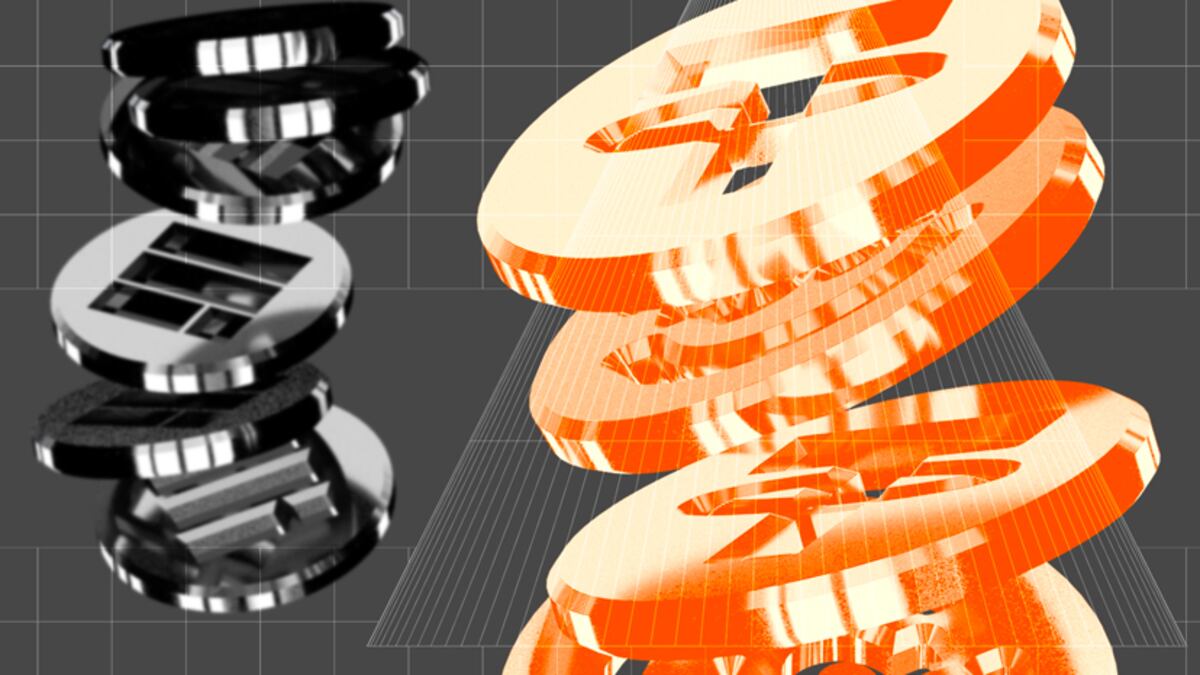- Some stablecoins and money market funds “look remarkably similar.”
- Both are vulnerable to runs in which investors flee to safer assets.
- If stablecoins become mainstream, they could “become a source of financial instability.”
Stablecoins are a lot like money market funds — and that could pose a threat to the broader financial system, according to researchers at the New York branch of the Federal Reserve system.
A new research report published by the New York Fed finds that stablecoins have several parallels with money market funds, a type of SEC-registered mutual fund that aims for price stability through relatively low-risk investments.
More than $5 trillion in assets has been invested in money market funds, the authors estimated.
Like money market funds, stablecoins give their investors money-like assets, are vulnerable to runs, and, in times of stress may exhibit a “flight to safety” in which investors swap them for other assets they believe are less risky.
“These run and flight-to-safety dynamics in stablecoins are similar to those observed in the MMF industry,” the researchers wrote. “Should stablecoins continue to grow and become more interconnected with key financial markets, such as short-term funding markets, they could become a source of financial instability for the broader financial system.”
There are three types of money market funds: government funds, which invest in cash treasuries and similar assets; prime funds, which can also invest in commercial paper and certificates of deposit; and tax-exempt funds, which can also invest in debt issued by local governments.
“Among stablecoins backed by traditional financial assets, US-based stablecoins (BUSD, USDP, and USDC) look remarkably similar to government MMFs,” the authors wrote. “By contrast, the offshore, asset-backed stablecoin Tether (USDT) is backed by a wider mix of assets that includes commercial paper and certificates of deposit, similarly to prime MMFs.”
The researchers analysed periods of stress for money market funds as well as stablecoins.
Runs on money market funds were prompted by the Great Recession in 2008, the European Union’s 2011 debt crisis, and the COVID-19 pandemic in 2020. In each instance, investors fled from prime funds to government funds, which were considered safer, according to the authors.
Runs on stablecoins considered by the researchers include the collapse of Terra in 2020 and of Silicon Valley Bank earlier this year.
When Terra collapsed, USDC was the beneficiary, “as investors at that time deemed it the safest stablecoin because it reportedly held Treasury securities and bank deposits, assets generally regarded as safe.”
Tether, meanwhile, with its commercial paper and other securities, suffered.
But USDC wasn’t so lucky when Silicon Valley Bank collapsed in March.
Because the bank held 8% of the assets backing USDC, traders dumped the token, sending its price as low as $0.88. Investors also dumped FRAX And DAI — stablecoins backed, in large part, by USDC.
Tether grew, with inflows pushing its price as high as $1.03.
To be sure, there are some key differences between money market funds and stablecoins, such as the assets that back them and investors’ rights — or lack thereof — to redeem those assets. Additionally, in contrast with money market funds, stablecoins are not regulated by the SEC and appeal primarily to retail investors, the authors wrote.
Got a tip on stablecoins? Contact aleks@dlnews.com.
